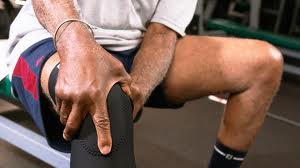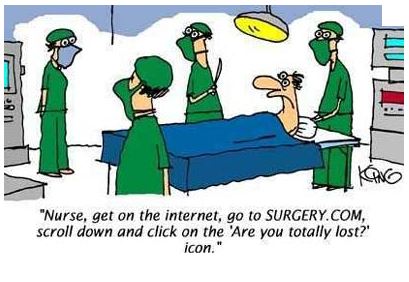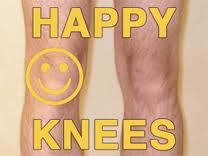Training hard should hurt. And it’s understood that exercise will result in sore muscles after you’re finished an intense exercise session. However, the old saying of ‘no pain no gain’ has its limitations. There are definitely times when pain is unwelcome. Those that know the difference between ‘good pain’ and ‘bad pain’ will be most successful in maintaining their training regimes over the long haul.
It’s true that if you push yourself you’ll go into the pain zone while training. You need this intensity to improve your overall fitness level. Your body is constantly adapting to new training stimuli; if you don’t offer more challenge to your routine, you will only maintain your fitness level and not improve in any of the fitness parameters. So, having said this, pain is a good measure of training intensity, allowing you to push to new levels. but let’s review what kind of pain this is in nature:
- it’s in the middle of any muscle belly
- it doesn’t’ hurt at a joint or bone
- it should be experienced symmetrically
- it increases slowly in degree, and will be a burning sensation
- increased cardiovascular intensity will feel like your lungs are burning and your heart is beating powerfully and rapidly
- you should never feel like passing out from lack of air, but you may get nauseated
- you may find that you lose your appetite after a good workout as well.
Sound like fun? The good thing is training at this level makes your body release endorphins that cause a ‘natural high’. This is the pleasurable sensation that makes us come back for more. Yes, I know, those of us that love challenge workouts live for this natural high. Sort of an invincible, ‘I can do anything’ feeling.
‘Bad pain’ is
 a sign of acute injury or overuse type injuries which include muscle strains, ligament sprains, tendon inflammation, contusions, etc. Training through pain caused from injury can exacerbate the condition. Learning to recognize the sometimes subtle differences in the pain you’re experiencing is an essential skill to develop. It’s often the difference between staying on track in your fitness goals and ending up at the doctor’s office, being forced to wait to heal up. Here are some tips for beginning exercisers:
a sign of acute injury or overuse type injuries which include muscle strains, ligament sprains, tendon inflammation, contusions, etc. Training through pain caused from injury can exacerbate the condition. Learning to recognize the sometimes subtle differences in the pain you’re experiencing is an essential skill to develop. It’s often the difference between staying on track in your fitness goals and ending up at the doctor’s office, being forced to wait to heal up. Here are some tips for beginning exercisers:
Start slowly. Anyone just starting a routine needs to go half speed for the first few workouts to ‘test the water’. It’s not only how you’re feeling while you’re working out, you need to pay attention to how you feel later in the day and the next day. Expect some soreness later.
- Ensure you are getting proper rest and nutrition to support your body’s recovery process and repair.
- Get professional help, such as a trainer, to guide you through those first workouts to ensure you’re performing exercises properly.
- Stop exercising and check your form if you feel joint pain, pain only on one side of your body, or any popping or pulling sensations.
If you have already experienced some of this ‘bad pain’, here are a few tips to aid your recovery:
- Rest any sore body part for a day or two until pain subsides.
- Consult with a trainer. Ensure your exercise form, especially any training which involves the injured body part, is done properly.
- Limit the range of motion of an injured joint. Sometimes you will only experience pain at the end range of a movement. For example, you can still do squats but not deep squats. Work within the mid-range, pain free portion of the movement. You can still develop leg strength while not aggravating the knee joint. This may also help speed recovery.
- Modify or stop altogether any movement that seems to aggravate an injury. If you ‘go lighter’ but still feel pain at the injured site, you aren’t doing your self any favors. You will not experience a training effect, but you will certainly further aggravate the problem and reverse all healing which has occurred.
- Ice, ice, ice. Ice will help to reduce inflammation at any injured site and speed up recovery.
- Ibuprofen, used cautiously. Anti-inflammatory drugs can mask pain, making it possible to train through injury, potentially resulting in further trauma. There are safer holistic approaches to reducing inflammation that can be explored.
- For severe or unknown levels of injury, seek medical attention. Doctors, chiropractors, and physiotherapists may aid recovery times and get you back in the game more quickly.
Exercise can be ‘a pain’. But you need to understand the difference between the good and bad kind.
Many of you know that at the moment, I’m training around a torn meniscus in my right knee. I’m a little discouraged about it all, but the fact is, when you train hard, things wear out. The key to remember here is that I haven’t stopped training! So many people just stop training when they have an injury. Wrong. Now I just have to train a little differently. I’m learning what I can and can’t do while I await treatment.
This blog is not meant as prescriptive. This is only meant to show that it’s possible to be training at an intense level with an injury. These are the things that I’m able to do with my knee. I”m not saying that you should be doing the same if you’ve sustained a similar injury. You should be listening to your body and figuring out what’s right for you. (Of course, I’m in the cue for some intervention, and don’t even get me started on that! Let’s just say that I’m not impressed with the health care system right now.)
Here’s a cool challenge that I figured I could do without much knee pain. It’s a cool circuit that you can do for time. Count down 10 reps to 1 on each exercise. So for example, do 10 KB swings, 10 DB lateral raises, 10 push ups, 10 stiff legged deadlifts, 10 pull ups, then do 9 reps of all five exercises…get it? Here are the exercises:
- KB swings (I used 30 lbs)
- DB lateral raises (I used 15 lbs)
- push ups
- DB stiff legged deadlifts (I used 30 lbs in each hand)
- pull ups (or assisted pull ups)
This seemed to work for me since I get my heart rate up and I get to work my hams and bum without too much deep compression or load on the knee. A great resource for short and sweaty workouts is Workout Finishers by my a pal, Mike Whitfield.








